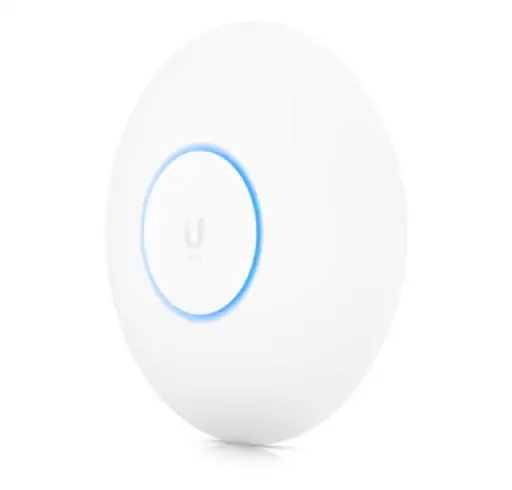 Click to enlarge!
Click to enlarge!
The package includes:

| Model | U6-LR |
| Weight | 800 g ( without mounting bracket) 920 g ( with mounting bracket) |
| Dimensions | Ø220 x 48mm |
| Material | Plastic, steel SGCC (handle) |
| Weather resistance | IP54 |
| Processor | Dual-Core® Cortex® A53 at 1.35 GHz |
| Memory | 512 MB |
| Management interface | Ethernet, Bluetooth Low Energy 5.0 |
| Network interface | 1 x 1 Gbps Ethernet RJ45 |
| Buttons | Reset |
| Power supply | PoE , Passive PoE (48V) |
| Power supply options | UniFi PoE Switch 48V, 0.5A PoE Adapter (not included) |
| Supported voltage range | 44 to 57VDC |
| Maximum energy consumption | 16,5 W |
| Handle | Yes |
| Operating temperature | -30 to 60° C |
| Operating humidity | 5-95% non-condensing |
| Certificates | CE, FCC, IC |
| Wi-Fi standard | 802.11a/b/g Wi-Fi 4/Wi-Fi 5/Wi-Fi 6 |
| Security | WPA-PSK, WPA |
| BSSID | 8 per radio |
| VLAN | 802.1Q |
| Advanced QoS services | Speed limitation for users |
 Click to enlarge!
Click to enlarge!
 Click to enlarge!
Click to enlarge!

 Click to enlarge!
Click to enlarge!
 Click to enlarge!
Click to enlarge!
 Click to enlarge!
Click to enlarge!
 Click to enlarge!
Click to enlarge!
 Click to enlarge!
Click to enlarge!
 Click to enlarge!
Click to enlarge!
 Click to enlarge!
Click to enlarge!
 Click to enlarge!
Click to enlarge!
 Click to enlarge!
Click to enlarge!
 Click to enlarge!
Click to enlarge!
 Click to enlarge!
Click to enlarge!
 Click to enlarge!
Click to enlarge!
 Click to enlarge!
Click to enlarge!
 Click to enlarge!
Click to enlarge!